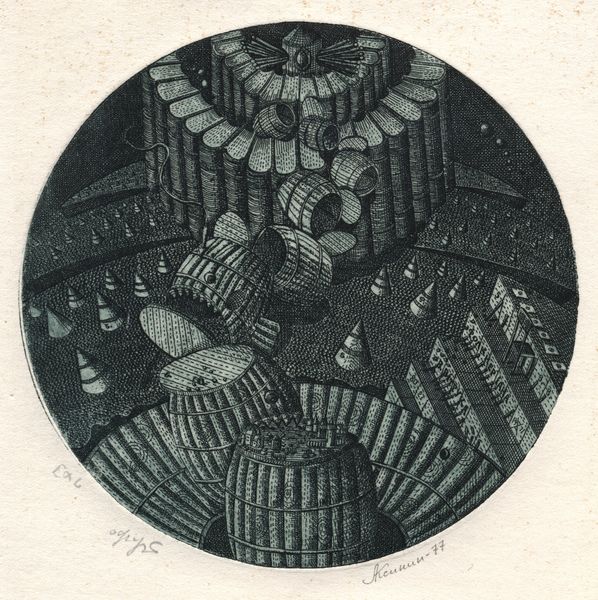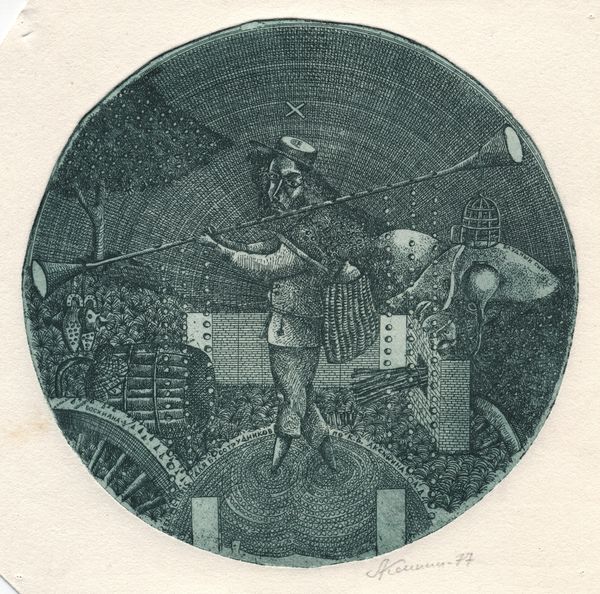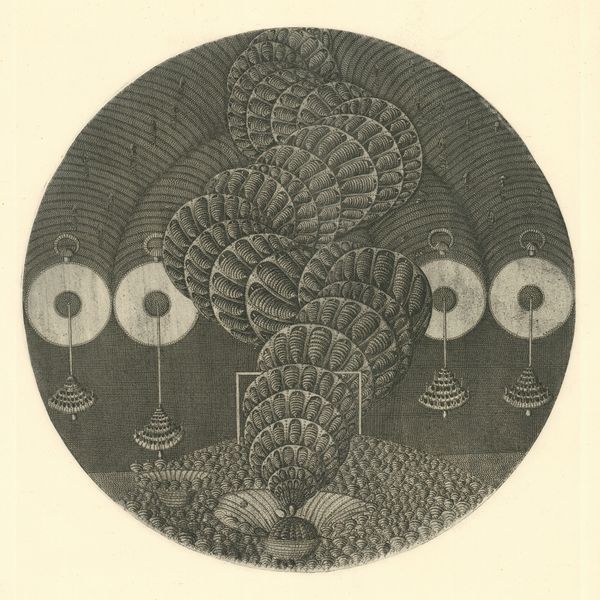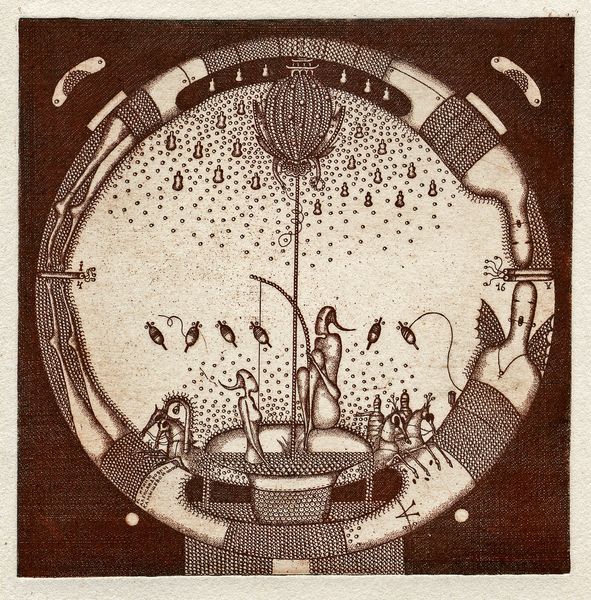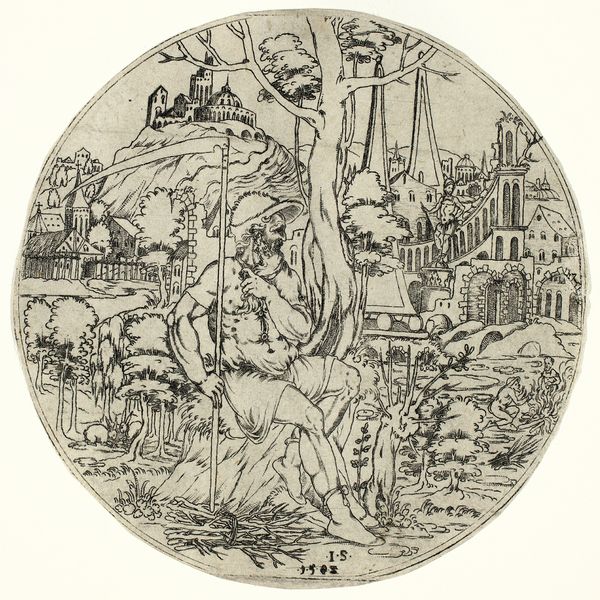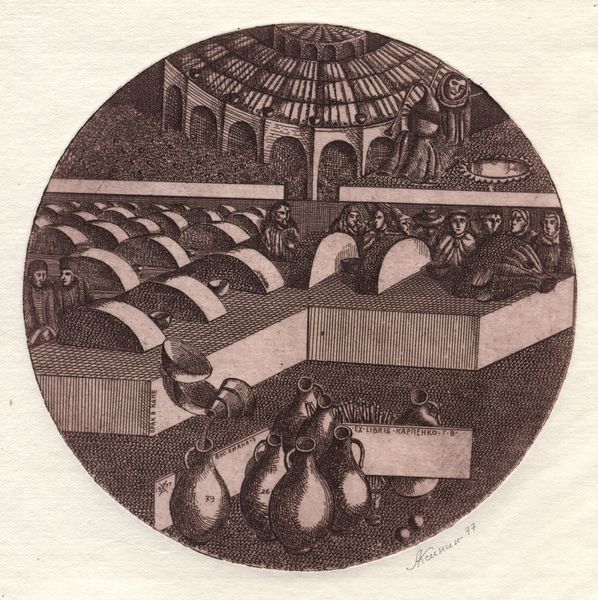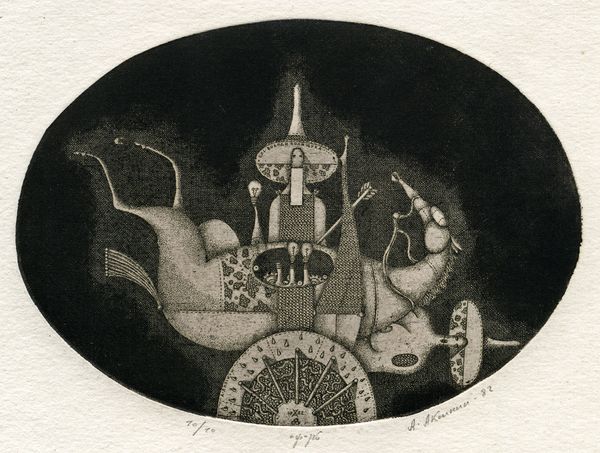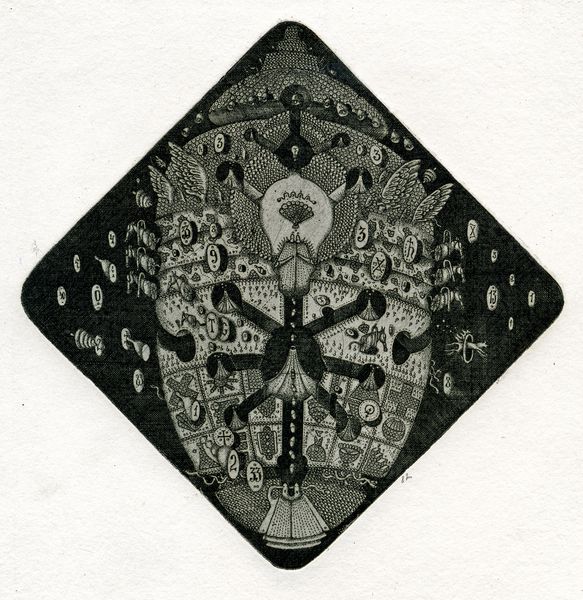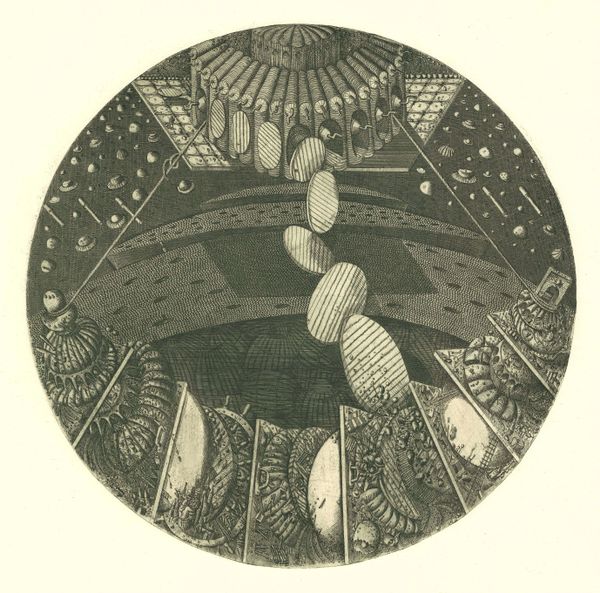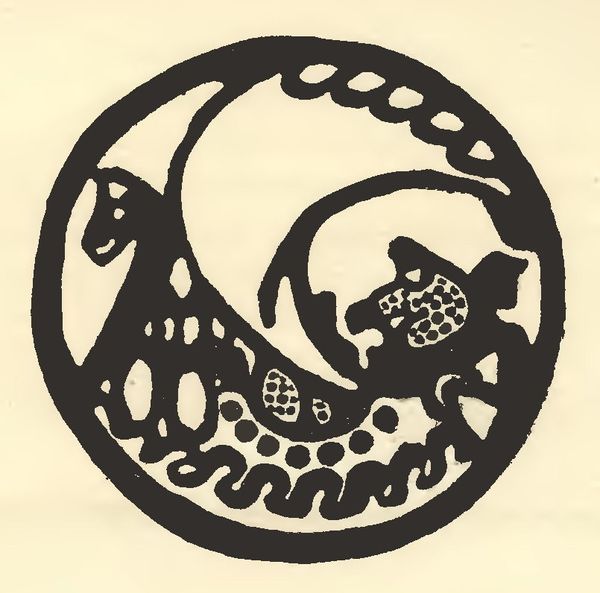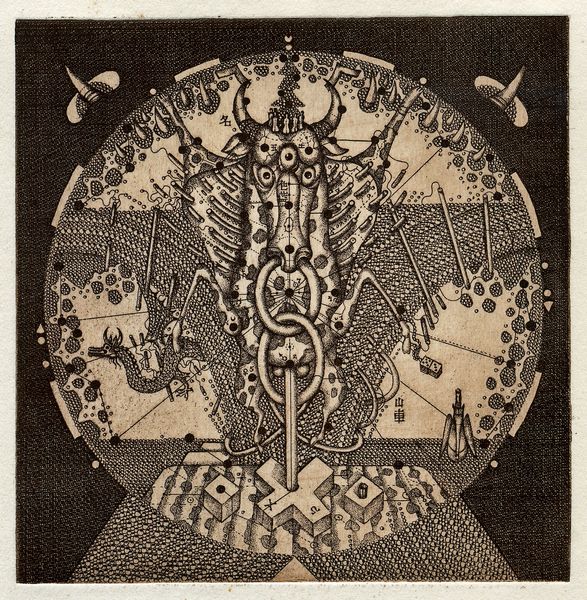
graphic-art, print, etching, intaglio
#
portrait
#
graphic-art
#
allegory
#
narrative-art
# print
#
etching
#
intaglio
#
figuration
#
line
#
identity-politics
#
surrealism
Copyright: Oleksandr Aksinin,Fair Use
Editor: Here we have Oleksandr Aksinin's "Exlibris of M.Sheykner and N.Kaminir" created in 1977. It's an etching, a type of intaglio print. The whole thing is a circle, kind of like a coin or a magnifying glass, filled with bizarre imagery. It feels dreamlike and a little unsettling. What historical or cultural context might inform how we interpret this work? Curator: Given that this piece was created in 1977 by a Ukrainian artist, it's crucial to view it through the lens of Soviet socio-political constraints. Aksinin, along with other artists, worked outside official Socialist Realism, often employing surrealism and allegory to encode critiques of the regime. How might the figures in the foreground, holding the Exlibris plaque, relate to the broader scene of funnels and a god-like figure pouring content above them? Editor: Perhaps the funnels and that figure represent the filtering or manipulation of information by the state? The couple holding the plaque almost seem like they're trying to hold onto authentic identity or creation. Curator: Precisely. The "Exlibris" itself – a bookplate – becomes a symbol of intellectual and personal ownership in a time when such freedoms were curtailed. Notice the watchful eyes scattered around; what do they suggest about the atmosphere in which this artwork was made and received? Editor: That's a little creepy; it really drives home the sense of surveillance and lack of privacy. So, it's not just a personal bookplate but also a subtle act of resistance? Curator: Exactly. Aksinin used surreal imagery not merely for aesthetic reasons but as a coded language to navigate the oppressive environment. By understanding that context, this "Exlibris" transforms from a personal emblem into a poignant statement about artistic freedom and cultural identity. Editor: That’s incredible. I thought it was just bizarre, but it is so much more now! Thanks! Curator: Indeed, recognizing the public role of art within historical power structures truly changes the way we see it.
Comments
No comments
Be the first to comment and join the conversation on the ultimate creative platform.
